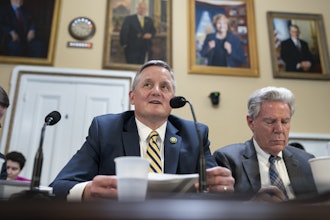Ginkgo Bioworks received a DARPA contract worth up to $6 million yesterday to come up with some incredible deicing technology. The contract falls under the agency's Ice Control for cold Environments (ICE) program.
The ICE program wants to control the physical properties of ice crystals to protect military assets and personnel in extreme cold environments. The idea is a form of bioengineering: creating novel technology that mimics biological adaptations to cold environments. While humans can't hang in the cold, animals, plants, and microbes have adapted to live and thrive in cold environments.
Most Read on IEN:
- Key Bridge Collapse Was 'Infrastructure System Failure'
- Boeing Sues Virgin Galactic Over Stalled Mothership Work
- Baltimore Bridge Collapse, Port Closure Sends Companies Scrambling to Reroute Cargo
- Ford to Drastically Cut Hourly Workers at F-150 Lightning Factory
According to a 2020 Military Health System (MHS) report, frostbite was the most common type of cold injury among active service members and a significant risk to missions due to insufficient medical countermeasures. Ice buildup on Department of Defense maritime equipment can also limit seaworthiness, increase risk on ship surfaces, and degrade electronics and machinery.
So, Ginkgo, working with AI life science data company Netrias and network company Cambium, will use the $6 million to develop novel biologically sourced and inspired materials that leverage biological adaptations to cold environments.
The team wants to produce novel deicing proteins sustainably, not just for the military but for broad commercial applications. For example, a lens coating that prevents frost from forming on satellites and high-altitude imaging instruments or security and wildlife cameras. The aerospace and automotive industries could also benefit. Finally, think of a reverse sunscreen, like a topical frostbite prevention product for outdoor enthusiasts. It will likely be a great tool for those climbing Mt. Everest and those on a sledding hill with their kids when it's below 0°F.
Next, Ginkgo will design a library of proteins with naturally occurring ice-modulating behavior. During this discovery phase, predictive models will iterate design–build–test–optimize cycles, looking for proteins with ice inhibition, induction and low-adhesion properties.
While we are working on this so poorly prepared dads don't freeze on midwest mountains, DARPA is interested because arctic warming is opening up an entirely new potential battlefield where the U.S. military must counter adversaries despite long deployments in extremely cold temperatures.






















